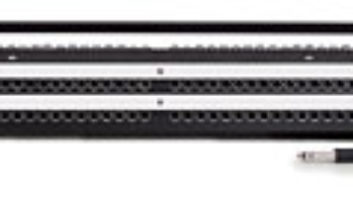LOCATING PARTS, IMPROVING POWER AND GROUND DISTRIBUTION
This is the third part in a series on analog equipment maintenance for geeks in training. Part One hit the ground running, diving straight into troubleshooting capacitors (the weakest link in aged gear) by using a square-wave generator and an oscilloscope. (The traditional method of measuring frequency response requires a sine wave oscillator and an AC voltmeter. A 1kHz square wave provides an overall snapshot of both low and high-frequency response that is good enough for troubleshooting, and sometimes more.) The same tools were used in Part Two to evaluate amplifier performance, particularly to upgrade early IC op amps, from ’70s-era products to just about anything modern. No matter whether attempting to repair or upgrade, the constant theme of troubleshooting is comparative analysis – take two examples of the same device and compare them; if they don’t measure or sound the same, then one of them is defective. This is relatively easy in the case of a recording console or tape machine, because having one good channel to compare with the problem channel is a major timesaver.
Beyond repairs, the topic that most interests my e-mail correspondents is “how to make things better.” This is a complicated issue. The best advice is to find a technician who is willing to do the geek stuff and show you how to do the dirty work. After changing caps on 24 modules, there’s no way your soldering skill won’t improve. But upgrades require a combination of skills, tools, time and money.
Before attempting any enhancements, you need to establish a solid foundation. Start with the obvious troublemakers – switches, pots and faders. Older American and British-made gear (from the ’50s through ’70s) can be easier to work on than their modern counterparts. Older stuff has more real estate (more room to work), while connections to pots and switches are hand-wired, making “off-the-shelf” replacement fun and easy. (Well, almost!) All you need are a few catalogs from digikey.com, mouser.com, newark.com, Antique Electronic Supply (tubesandmore.com) and New Sensor Corporation (sovtek.com), to name a few.
Why go to the trouble of upgrading an older console when newer digital gear is so cheap? In this analog-to-digital transition era, many “affordable” analog consoles – new and used – have found a niche as “monitor mixers” and are increasingly used for the relatively simple task of multitrack playback. In fact, analog mixers can simply resolve the digital latency issue – an analog mixer can provide a direct signal path from the mic/direct box to the musicians, free of unnecessary A-to-D and D-to-A steps. And, though no one denies the power of mixing in the digital domain, many miss the simplicity and ease of “playing” even the cheapest analog mixer. Dedicated knobs and switches make for tangible fun without the worry of clocks, masters or slaves.
Upgrades become more problematical on mass-produced equipment that has gone through an automated assembly process. The physical characteristics of pots mounted directly to circuit boards are often so specific that replacements can only be purchased from the original manufacturer, if still alive and well. Assuming you’ll want to use the same knobs as on the original, finding the same shaft dimensions alone can be an ordeal akin to a wire-brush enema. An entire article could be written on the topic of finding replacement Clarostat pots for an MCI JH-600 Series console – nearly all the pots have custom dimensions and tapers. And even quality pots succumb to the additional physical stress of being mounted to both the front panel and the PCB. Any flexing will eventually break the connections inside the pot. Trident Series 65 and 80 consoles are prime examples of cheap pots plus poor mechanics (and some of the worst caps ever).
It’s easy to point the finger at poor component selection in vintage gear, but new designs are not immune from design error. After installing a new 32-input mixer, a customer found the effects returns to be unacceptably noisy. Though the problem was omnipresent, the extra gain in the aux summing amps compared to the stereo mix bus resulted in the hum being processed by chorus and flanger effects into a swirling 3-D buzz.
THIS MONTH’S MOD
With that example in mind, here’s a fairly simple mod. In most “budget” mixers, the power and ground connections are distributed to each module via a motherboard or ribbon connector. This is fine for an 8-channel, rackmount device – the original Soundcraft 200 Series, for example – but when the frame is extended to accommodate 24 additional modules, a ribbon cable is not capable of doing the job. Not knowing the original wire dimensions, I measured one conductor of an 80-inch section of 28-gauge ribbon cable. The resistance was 0.5 ohms or 0.075 ohms per foot, certainly not an effective ground. Each module was at a slightly different voltage and ground potential, creating the internal hum.
The solution was to route a ground wire to each module – details at www.tangible-technology.com – a “fix” that not only lowered the hum but resulted in many users remarking about improved low-end punch and a better stereo image. Each console is different, so there’s no way to tackle your specific problem here, but I will show how to “interrogate” a console. Plus, we’ll examine a more recent upgrade.
BRIGHT LIGHTS, BIG TORTURE
In order to determine whether the source of the hum is internal or external, everything should be disconnected from the mixer, except for a pair of headphones or some sort of monitoring system. Knowing how hard this can be, the following procedure assumes everything is connected. Note that muting a channel module does not disconnect it from the busing system – only de-assigning the mix and/or groups will effectively take a module “out of the system” without actually removing it. (This doesn’t apply to aux sends, which are typically hard-wired to their respective buses.) Be sure that no video monitors, power supplies and wall warts, or power amps are anywhere near the console and its cabling.
To begin, monitor the mix bus for all noise, and then mute all effects returns. Expect the hiss to be reduced, because effects are notoriously noisy without any help from the aux sends. If hum is present on all buses, then it’s probably worse in the aux sends and should diminish when the returns are muted. Now, mute all channel strips. What remains should be a minimal amount of hiss. If background hum is present, now is the time to de-assign all channels and returns (if possible). If the hum goes away, your console may be a candidate for improved grounding. But to fully qualify, disconnect all external wiring and repeat the test.
GREAT RIVER
Here’s a recent upgrade story. Dan Kennedy, of Great River Electronics here in the Twin Cities, recently acquired two Trident Series 65 consoles, one with 24 and one with 16 modules. Kennedy combined the two with some fine and fancy metal work and improved the power and ground distribution in the process. He also modified the Master Module, which includes the mix bus and control room monitor section.
In Fig. 1, the motherboard appears across the bottom, where a wire bundle – red, black, white and blue (hidden) – delivers power and original ground. Above is the new copper bus bar, distributing ground to each module connector via the green wire, when previously only the circuit board trace did the job. Power and ground were formerly distributed from “momma to momma,” via jumper wires until a barrier strip was installed, as shown in Fig. 2. Now, each motherboard gets its own power connection. (Note: Some liberties were taken with the wire colors.)
A similar approach was taken on the Master Module. Highlighted in yellow in Fig. 3, a new solid ground wire is paralleled with the original ground trace. In addition, note the three black wires that branch off from the connector to reinforce the ground for the more “distant” areas in need. You really can’t have too much ground.
On the flip side of the motherboard, two Burr-Brown OPA602ap op amps replace ICs 23 and 24 – the stereo fader buffer amplifiers – as seen in Fig. 4. The Burr-Brown part has a minimum slew rate of 20 volts/microsecond and a quiescent (idle) current of 3 mA min to 4.5 mA max when hot. Both of these parameters are about twice that of the original TL071 part. Replacing just these two op amps in the Master Module might not be cause for worry – in terms of power consumption – but there are 23 op amps on this PCB alone! Kennedy felt the Master/Monitor module was very important. The old power supplies were replaced with a single redesigned supply with more than enough reserve power for any future op amp upgrades.



